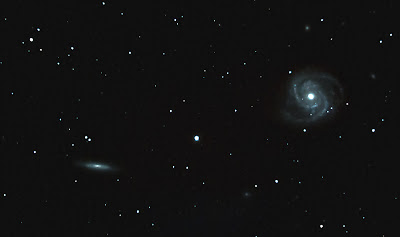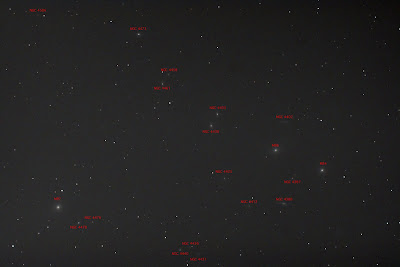
My nominee for most useful alert box. I usually make fun of Windows when this happens. Most unsettling.















Comet Lulin (official designation C/2007 N3 (Lulin)) is a non-periodic comet. It was discovered by Ye Quanzhi and Lin Chi-Sheng from Lulin Observatory. It peaked in brightness and arrived at perigee for observers on Earth on February 24, 2009, at magnitude +5 and at 0.411 AU from Earth. … According to NASA, Comet Lulin's green color comes from a combination of gases that make up its local atmosphere, primarily cyanogen and diatomic carbon, which both appear as a green glow when illuminated by sunlight in the vacuum of space.


The Cone Nebula (also known as NGC 2264) is an H II region in the constellation of Monoceros. It was discovered by William Herschel in 1785. The nebula is located about 800 parsecs or 2,600 light-years away from Earth.
The Cone Nebula is part of the nebulosity surrounding the Christmas Tree Cluster. The designation of NGC 2264 in the New General Catalogue refers to both objects and not the nebula alone.
The diffuse Cone Nebula, so named because of its apparent shape, lies in the southern part of NGC 2264, the northern part being the magnitude-3.9 Christmas Tree Cluster. It is in the northern part of Monoceros, just north of the midpoint of a line from Procyon to Betelgeuse.
The cone's shape comes from a dark absorption nebula consisting of cold molecular hydrogen and dust in front of a faint emission nebula containing hydrogen ionized by S Monocerotis, the brightest star of NGC 2264. The faint nebula is approximately seven light-years long (with an apparent length of 10 arcminutes), and is 2,700 light-years away from Earth.
William Herschel discovered the Cone Nebula (which he designated H V.27) on December 26, 1785. It is part of a much larger star-forming complex—the Hubble Space Telescope was used to image forming stars in 1997.

In astronomy, the Pleiades (Messier object 45) are an open star cluster in the constellation of Taurus. It is among the nearest star clusters. It is the cluster most obvious to the naked eye in the night sky. Pleiades has several meanings in different cultures and traditions.
The cluster is dominated by hot blue stars that have formed within the last 100 million years. Dust that forms a faint reflection nebulosity around the brightest stars was thought at first to be left over from the formation of the cluster (hence the alternate name Maia Nebula after the star Maia), but is now known to be an unrelated dust cloud in the interstellar medium that the stars are currently passing through. Astronomers estimate that the cluster will survive for about another 250 million years, after which it will disperse due to gravitational interactions with its galactic neighborhood.